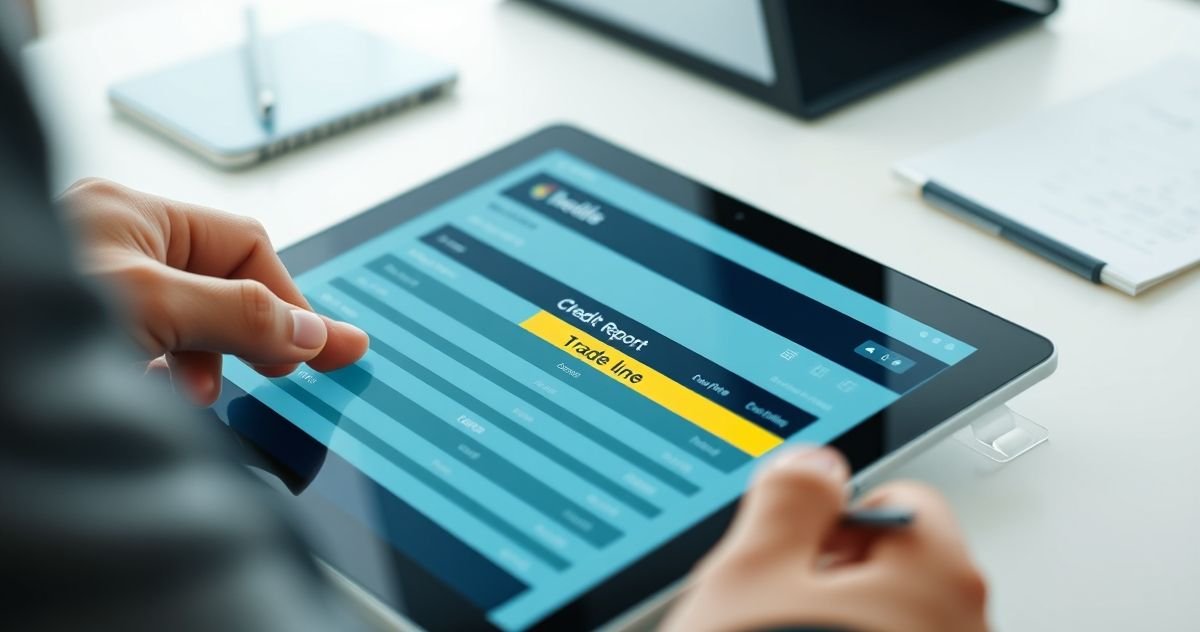A trade line is an individual account entry on your credit report representing each credit relationship you have, including credit cards, mortgages, auto loans, and more. It records important details about that specific account, such as payment history, current balance, credit limit, and account status. These details help lenders evaluate your creditworthiness and play a significant role in determining your credit score.
Think of your credit report as your financial story, with each trade line representing a chapter about one of your borrowing accounts. Together, these trade lines show lenders how you manage different types of credit, influencing their decision to lend you money and the terms they offer.
Each trade line typically includes:
- Creditor Name: Identifies the lender, e.g., Chase or Ford Motor Credit.
- Account Number: A partially masked unique identifier for security.
- Account Type: Specifies whether it’s a revolving account (like a credit card) or an installment loan.
- Date Opened: When the account was established; older accounts generally help your credit score.
- Credit Limit or Loan Amount: Maximum allowed or original loan amount, relevant for credit utilization calculations.
- Current Balance: How much you owe on the account.
- Payment History: Records of on-time or late payments over the past 24 months or longer.
- Account Status: Whether the account is open, closed, or delinquent.
Trade lines heavily influence the five main credit scoring factors:
- Payment History (35%): Timely payments across trade lines are the most critical factor.
- Amounts Owed (30%): Current balances versus credit limits on revolving accounts affect your credit utilization ratio.
- Length of Credit History (15%): The average age of your trade lines matters.
- Credit Mix (10%): Variety of credit types, such as revolving and installment accounts.
- New Credit (10%): Multiple new trade lines opened recently can drag your score down temporarily.
Beware of services offering to “sell” trade lines or authorized user spots on strangers’ credit accounts. According to the Federal Trade Commission, these often amount to credit repair scams and may not improve your score, especially with newer scoring models that detect these practices.
The safest way to build strong trade lines is by responsibly managing your own accounts. Opening credit cards or loans and making on-time payments consistently will build your credit over time.
Frequently Asked Questions
How long do trade lines stay on my credit report? Positive accounts can remain indefinitely, benefiting your credit history length. Negative trade lines, like late payments or collections, typically stay for up to seven years, while bankruptcies can remain for up to ten years under the Fair Credit Reporting Act (FCRA).
How do I add a trade line? Opening a new credit account, such as a credit card or a credit-builder loan, will create a new trade line once the lender reports the activity to the credit bureaus.
For more detailed information on credit reports and credit scoring, visit our Credit Report glossary and Credit Utilization Ratio glossary.



